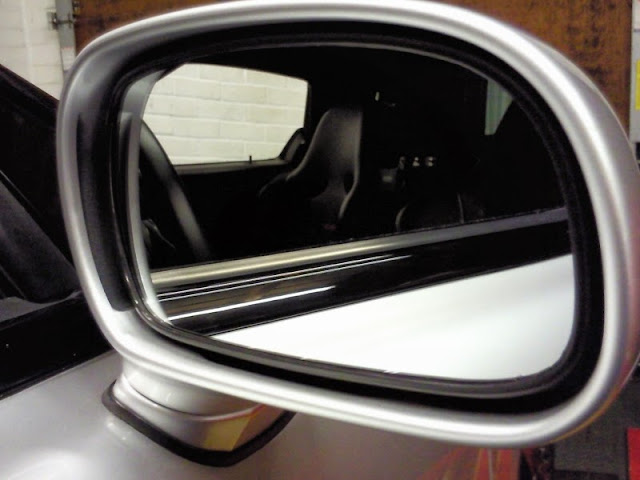Eng Refresh 25
by , 23-03-2014 at 05:20 PM (2525 Views)
Went out for the 1st test driving session for the general checks.
Happy with the result so back on the lift, visual inspection,
re-torque the wheel nut, adjust the Aux belts tension, etc and
checked the base idle rpm.
This is the DBW model so needs to short the 2pin Blue SCS terminal
before starting the engine.
Aim for about 600rpm under no load condition.

There was still locking paint in place from the factory on top of the
adjust screw so no one touched it in the past.
Because of this, I was expecting no need to touch it but at the end,
I had to close the screw about 95 – 100deg clockwise to lower the
base idle rpm.
Locked the screw with liquid gasket later.
Remove the blue connector, raise the rpm just above 1,000rpm,
hold it and then release it gently.
The ECU will force the idle rpm at around 800rpm.
As seen on many NSX, this NSX was also showing about 850 - 875rpm
on the dash gauge when the real signal was at 800rpm.
Reset the ECU and re-learnt the study value in preparation for the
next test driving session.
The owner brought the replacement door mirror glass.
The reflector was showing lots of haze spots everywhere and
they couldn't be polished out.
Probably due to heat or chemical used during the re-spray process as
the damage was done from behind the mirror and not at the mirror surface.

Took bit of time replacing it but finally, it’s in place.
Time for the cruising mode test driving session.
After going through the same low speed session, happy with the conditions
so went on to the dual carriage way and kept 70mph cruising mode for about
45min.
On the way back, engaged VTEC several times and brought the rpm up to
near 8,000rpm.
Another steady cruising mode and then back to the same low speed course for
the cool down session.
Happy with the result and all emission flags were all set.
Although I topped the washer tank up well below the max level,
the washer fluid still managed to seep out from the tiny centre hole
on the cap.
Because I use blue washer fluid and it drips just below the radiator,
it can be mistaken as the coolant leakage because Honda Type 2 coolant
is also blue.
Reminded the owner through email that the cooling system was
vacuum leak checked and there was no leakage to prevent
misunderstandings.
I think it's something to do with the aftermarket body parts used on this NSX.
So, Eng Refresh is done and time to service the A/C CCU.
Kaz








 Email Blog Entry
Email Blog Entry

